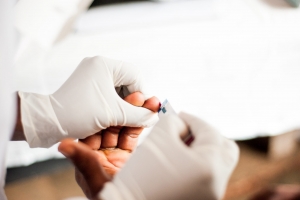Secondary Distribution of HIV Self-Tests: an Innovative Strategy for Promoting Partner Testing and Reducing Risk
Nearly half of HIV-infected individuals in sub-Saharan Africa (SSA) are unaware of their serostatus. Increasing awareness of serostatus is the first of the UNAIDS “90-90-90” targets and a critical step in ensuring the success of HIV treatment as prevention. HIV self-testing (HIVST) is a promising approach for increasing knowledge of HIV status. With the development of simple, oral fluid-based tests, a number of countries are scaling-up HIV self-testing.
This NIH-funded study seeks to increase HIV testing and reduce high-risk sexual behaviors through ‘secondary distribution’ of HIV self-tests, whereby an individual is given multiple self-tests for distribution in social and sexual networks. The study is a cluster-randomized clinical trial among 2,000 high-risk, HIV-negative women in Kenya’s Nyanza region. Over an 18-month follow-up period, the study will examine outcomes of HIV incidence, identification of HIV positive partners, and unprotected sexual encounters with partners whose status is positive or unknown.


